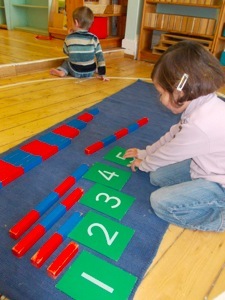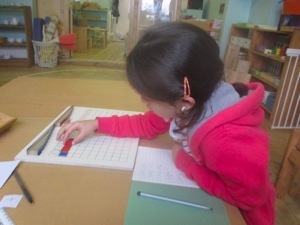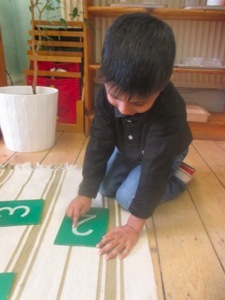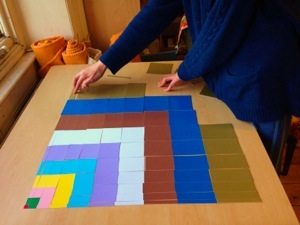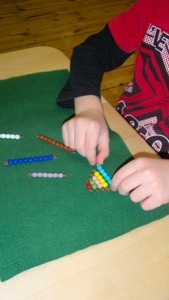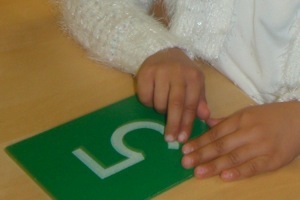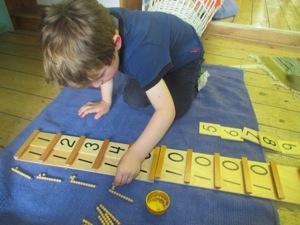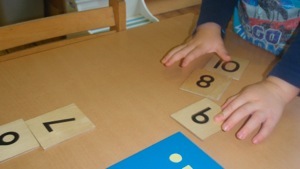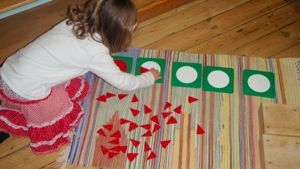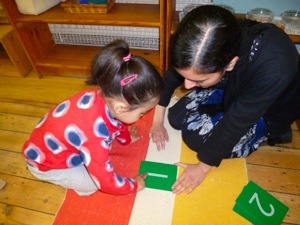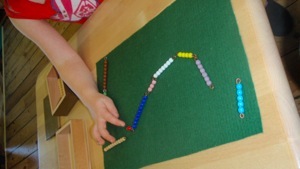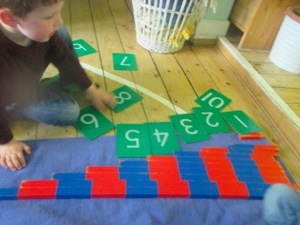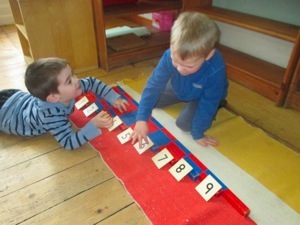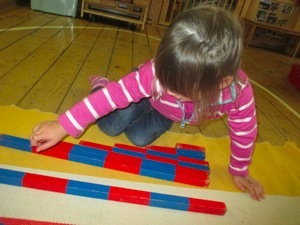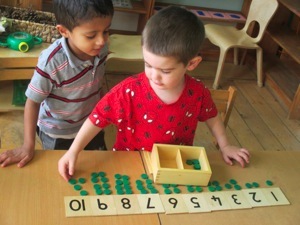“Children display a universal love of mathematics, which is par excellence the science of precision, order, and intelligence.” - Maria Montessori




Mathematics – is taught through the use of specialised equipment, which allows manipulation of concrete materials, preparing for later work in abstract reasoning. This work gives a solid understanding of basic mathematical principles and helps to develop problem-solving capabilities.
The programme is based on developing skills, teamwork and co-operation games rather than competitive sports.
Dr. Montessori recognised that children are born with a particular kind of mind, one that is naturally inclined towards order. This ‘special’ mind is what gives humans the ability to make judgements and to calculate; it is how we have progressed in fields such as engineering and architecture. Dr. Montessori called this ‘the mathematical mind’ - a term borrowed from the French physicist and philosopher Blaise Pascal. Montessori felt that, if we are to support development, then we must offer mathematics at an early age since this is the kind of support that is appropriate for the kind of mind that we have. She observed:
‘Great creations come from the mathematical mind, so we must always consider all that is mathematical as a means of mental development. It is certain that mathematics organises the abstract path of the mind, so we must offer it at an early age, in a clear and very accessible manner, as a stimulus to the child whose mind is yet to be organised.’
Dr. Montessori also knew that the child aged six and under learns through his senses and through movement, that is, through hands-on, manipulation. She concluded that she needed to provide mathematical concepts in a concrete form, which would be accessible to the children's senses. A prime example is the material used to introduce the concept of quantity: the Number Rods. These wooden rods are painted in sections of red and blue so that each section represents the addition of a unit. The rod for two is therefore twice as long and twice as heavy as the rod of one; that the rod for ten is ten times larger than that for one is strikingly apparent.
In traditional education, on the other hand, mathematics is taught in a less hands-on manner. The child is given the abstract symbol as a starting point. Beads on a thread may be used to practise counting to ten, but it is more often done aloud or in the form of songs. Recognising the symbol and counting up to ten does not imply an understanding of what these numbers mean; they are simply symbols and words to be said in sequence. Furthermore, counting individual objects such as beads requires the child to make the additional mental step of grouping objects together in order to come up with the quantity. Far clearer is the Montessori approach of presenting the idea of the quantities as a whole using the Number Rods. As Dr. Montessori wrote,
‘When, on the other hand, in ordinary schools, to make the calculation easier, they present the child with different objects to count, such as beans, marbles etc., and when, he takes a group of eight marbles and adds two more marbles to it, the natural impression in his mind is not that he has added 8 to 2, but that he has added 1+1+1+1+1+1+1+1 to 1+1. The result is not so clear, and the child is required to make the effort of holding in his mind the idea of a group of eight objects as one united whole, corresponding to a single number, 8. This effort often puts the child back, and delays his understanding of number by months or even years.
The Montessori approach offers another concrete experience in the form of the Golden Bead material used to introduce the Decimal system. A child of four can see without being told the differences between one, ten, one hundred and one thousand: one unit is represented with one golden bead whereas one thousand is a cube made up of one thousand golden beads. As the child handles the material in a series of different activities the contrasts are enforced by the comparative weights and volumes of the items. The fact that the child has been given a vision of the whole scope of the Decimal system inspires wonder and a desire to explore further. In traditional schools the larger quantities are not introduced until the child is much older; this child is proud to say ‘I can count to 100’ whereas the Montessori child, having truly grasped the idea of the Decimal system can count on indefinitely.
Mathematics
